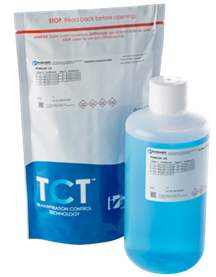Sponsored by ESSLABReviewed by Olivia FrostAug 27 2025
Heavy metal contamination in food is a major public health concern, especially in chocolate and protein powders.
This article examines where heavy metal contamination originates from, its health and safety risks, and how dependable analytical methods, supported by Certified Reference Materials (CRMs), ensure accurate, reproducible quality control testing.

Image Credit: ESSLAB
Environmental Sources of Contamination
Toxic metals, such as cadmium (Cd), lead (Pb), arsenic (As), and mercury (Hg), do not enter the food chain intentionally, but accidentally through environmental exposure, including:
- Soil Contamination: Crops can absorb heavy metals from contaminated agricultural soil.
- Water and Air Pollution: Contaminated irrigation water and airborne particles from industrial or natural sources can deposit metals onto crops.
- Manufacturing and Packaging: Contamination can happen during processing or through contact with packaging materials.
Some examples:
- Protein Powders: Made from raw plant materials, including rice, hemp, rapeseed, and peas, that can absorb metals from soil or irrigation water.
- Chocolate: Cadmium can accumulate in cocoa plants from specific soil types and may also be contaminated during fermentation, processing, or packing.
Health Risks and The Need for Testing
Heavy metals, even in small concentrations, can cause serious health consequences, such as:
- Neurological abnormalities.
- Developmental delays in children
- Carcinogenic effects
Because even trace levels of these metals can be toxic, rigorous testing is essential to prevent contaminated food from reaching consumers. Public awareness and regulatory scrutiny have heightened demand for high-quality testing and transparent reporting.

Image Credit: ESSLAB
Analytical Methods of Detection
Detecting ultra-trace levels of heavy metals demands advanced, highly sensitive instrumentation.
- ICP-MS (Inductively Coupled Plasma Mass Spectrometry) is the preferred method for trace metal analysis due to its excellent sensitivity and accuracy.
- ICP-OES (Inductively Coupled Plasma Optical Emission Spectrometry) detects several elements in water and food matrices.
- AAS (Atomic Absorption Spectrometry) is suitable for routine single-element analyses.
To ensure the accuracy of the results, these approaches necessitate rigorous calibration and validation protocols.
The Role of Certified Reference Materials (CRMs)
CRMs are essential for producing analytical data that is both accurate and defensible. Their key responsibilities include:
- Calibration of instruments using known reference values to adjust sensitivity and accuracy.
- Validate analytical procedures for detecting target metals at relevant concentration levels.
- Ensuring traceability by linking results to internationally recognized standards (e.g., ISO, NIST).
Without CRMs, laboratories risk generating inaccurate data—leading to regulatory violations and potential public health harm.
Regulatory Standards and Compliance
Food standards authorities around the world have set rigorous limitations for heavy metal levels in food, including:
- The Food Standards Agency (UK) monitors heavy metal concentration in seafood.
- FDA Closer to Zero Initiative (USA) aims to reduce metals in infant food.
- The European Food Safety Authority (EFSA) regulates maximum levels of cadmium and lead in food products.
- Codex Alimentarius provides international food safety benchmarks.
Meeting these criteria requires reliable analytical test findings supported by established techniques and CRMs. Testing laboratories must be approved by ISO/IEC 17025.

Image Credit: ESSLAB
Ensuring Consistency and Reproducibility
Reproducible test results are essential to maintaining both regulatory compliance and scientific credibility. CRMs offer:
- Inter-lab Comparability: Standardized calibration, ensuring uniformity between testing facilities.
- Audit Readiness: documenting and tracing outcomes for regulatory inspections.
- Product Release Assurance: Verifiable data ensures product safety for producers during the release process.
For example, the FDA's Closer to Zero program sets ultra-low detection limits for baby foods, limits achievable only through precise calibration and validated methods using CRMs.
Building Consumer Trust Through Transparency
Informed customers now expect complete openness from food manufacturers. Investing in high-quality QC testing, supported by CRMs, enables brands to:
- Demonstrate compliance with safety regulations.
- Establish reputation and loyalty to avoid negative publicity and costly recalls, such as UK FSA Food Alerts and batch recalls.
- Differentiate products in competitive markets.
For manufacturers of delicate items such as infant formula or health supplements, thorough testing techniques are no longer optional; they are required.
Reference Standards and Methods
Source: ESSLAB
| Standard Method |
Purpose |
| FDA EAM 4.7 |
Elemental analysis in food and supplements |
| EPA Method 6020B |
ICP-MS for metals in solid waste and food |
| USP <233> |
Harmonized procedure for elemental impurities |
| AOAC 999.10 |
Arsenic, cadmium, lead, and mercury in foods |
| ISO 11885 |
ICP-OES method for water and food matrices |
| EN 15763 |
ICP-MS determination of lead, cadmium, mercury |
| EPA Method 7010 |
Lead in soils and solid waste |
| NIST SRM 2384 |
Certified values for metals in baking chocolate |
Conclusion
Accurate testing, backed by Certified Reference Materials, is the key to safe food, regulatory compliance, and lasting consumer confidence.
References

This information has been sourced, reviewed and adapted from materials provided by ESSLAB.
For more information on this source, please visit ESSLAB.